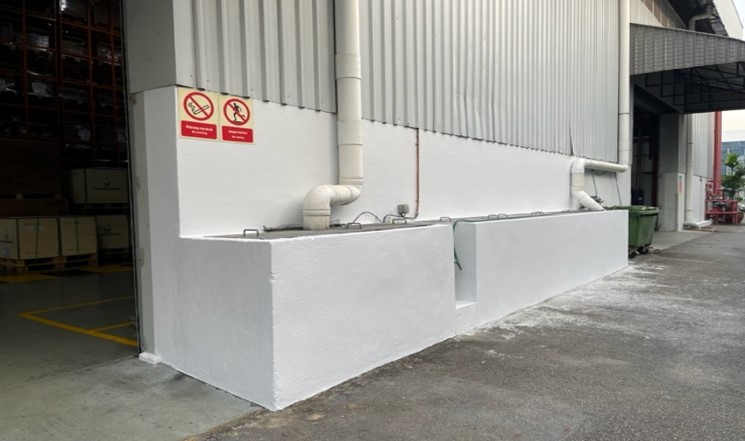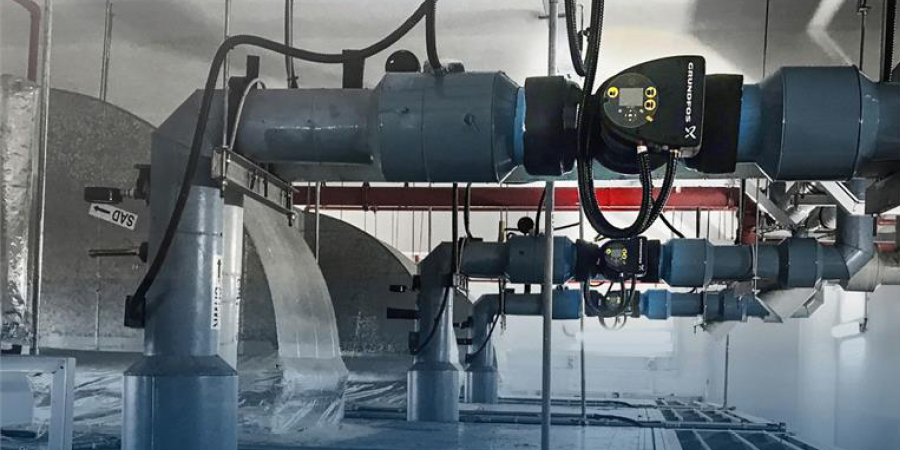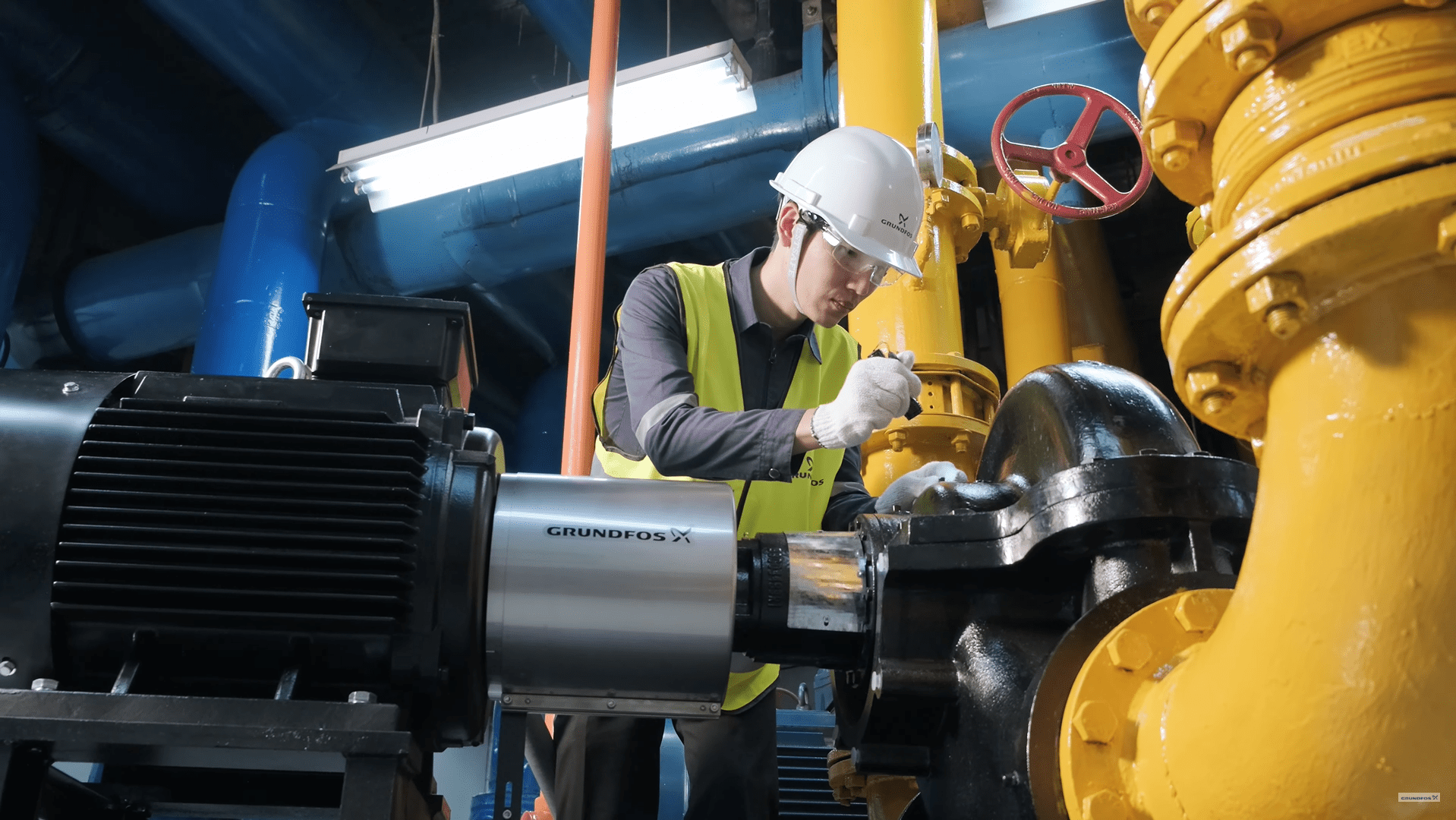Grundfos: Recognising Its Unique Role and Responsibility in Water Sustainability and Efficiency
Grundfos is one of the global water solutions leaders and one of the largest pump manufacturers with an annual production of more than 16 million pump units, circulator pumps, submersible pumps and centrifugal pumps. Established 75 years ago, Grundfos is based in Denmark, with over 19,000 employees globally.
Grundfos is committed to greater respect and understanding of water around the world. It protects water by minimizing waste, inefficiency, shortage, discomfort and inaccessibility, wherever the flow of water is needed. Through water system innovations, Grundfos advances the flow of water with a focus on sustaining water’s flow now and into the future.
As a global water solutions leader with a presence in Malaysia since the mid-1960s, and one of the leading pump manufacturing players in the country, Grundfos recognises its role in delivering products and services that are sustainable and resource efficient. Exemplifying a longstanding commitment to pioneering solutions to Malaysia’s and the world’s water and climate challenges, Grundfos also “walks the talk” by embedding green practices in its operations. Asian Water talked to Giancarlo Roggiolani, Senior Regional Sales Director for Domestic Building Services for APAC & China and Country Director for Grundfos Pumps Malaysia recently on Grundfos Malaysia and water sustainability and efficiency in the country.

ASIAN WATER: Sustainability has always been the number one focus in all industries and water has been at the heart of it. Its scarcity and depleting resource touches every part/aspect of our lives. With that said, how does Grundfos play its role in delivering products and services that are sustainable and resource efficient?
Roggiolani: Water plays a key role in securing a sustainable future for all. It is a scarce and rapidly depleting resource essential for socio-economic development, healthy ecosystems, and human survival. Beyond the crisis in our water resources, our water use comes with a significant carbon footprint, as it takes a tremendous amount of energy to transport, treat and reuse water. On average, every cubic meter of water consumed generates 10.6kg of carbon emissions[1].
As a global leader in pump and water solutions, we recognise our unique role and responsibility in addressing the world’s water, energy and climate challenges. We are committed to applying our expertise in identifying new possibilities for innovations and solutions that are more efficient, save more energy, save more water and help make the world a better place for future generations.
To deliver on our sustainability promises, we have identified four areas where we want to be leaders and where we can have the greatest impact: saving water, water access, saving energy, and circular business. These four ambitions, combined with our sustainability fundamentals, set the direction for our ongoing development of products and solutions, ensuring that they have a meaningful impact on climate change and society and our operational development.
Within Grundfos Domestic Building Services business unit, our focus is two-fold – we are dedicated to enhancing the water experience and comfort in homes while offering sustainable choices that help consumers save energy and water.
We believe comfort and efficiency can go hand in hand. Guided by our sustainability ethos, we provide a comprehensive portfolio of water pump solutions for Malaysian families. Our offerings include products for boosting water pressure, wastewater pumping and transportation, and domestic hot water recirculation, all designed to align comfort with efficiency, supporting consumers’ pursuit of a greener lifestyle.
ASIAN WATER: In 2021, the Malaysian government announced a carbon-neutrality target of 2050, along with a goal to increase the share of renewable energy in its installed capacity to 31% by 2025 and 40% by 2035. What is your opinion on this matter and how can businesses support Malaysia in achieving its climate targets?
Roggiolani: The Malaysian government’s sustainability ambitions not only align with global sustainability efforts but also present significant opportunities for businesses to invest in clean energy, drive innovation and contribute to a more sustainable and resilient future.
Businesses have a pivotal role to play in supporting Malaysia’s transition to a net-zero future. Through setting ambitious climate goals, adopting sustainable practices and collaborating with governments and communities, businesses can reduce their carbon footprint and inspire broader change across the supply chain.

Grundfos is the first water sector organisation in the world to receive approval of net-zero targets from the Science-Based Targets initiative (SBTi), and in the top five Danish businesses to take leadership in this area.
Our net-zero future at Grundfos is anchored in our ability to reduce associated emissions related to both our products and solutions and our own footprint. Without energy efficiency, the green transition will not succeed. We need to start thinking urgently about how much energy we use. We need a mix of long- and short-term clean energy sources to meet our 2050 net-zero goal. One of those sources is energy efficiency in our homes – we simply need to consume less and make sure that no energy goes to waste.
It’s important to make the right choice when selecting and sizing a boosting system for residential developments. Without the right solution, energy consumption can become excessive and unsustainable. Homeowners and residents can save on their total energy consumption by choosing energy-efficient pressure boosters instead of traditional booster pumps. A fixed speed traditional booster system consumes more energy than a pressure booster solution with variable frequency drive, which is what our SCALA2 pressure booster pump delivers.
ASIAN WATER: What are the challenges that businesses in Malaysia might face in achieving its climate targets and in what ways can Grundfos play a role in providing solutions for these challenges?
Roggiolani: The key challenge for businesses in Malaysia to transition to net-zero future has shifted to beyond convincing them on the ‘why’, but now understanding the ‘how’.
To kickstart that process, businesses need to first understand the scale of the issue, such as the level of resource use in their business operations. From there, they can then understand the potential areas for optimisation and evaluate the different options.
At Grundfos, we support our customers to gain such understanding through audits such as Grundfos Energy Check Advanced, where they receive an overview of the life-cycle costs (LCC) of their pumps. This information can then help them consider the necessary changes for their operations to reduce energy consumption.
Cost can also be a significant barrier for businesses when considering the green transition. With this, businesses need to look at the life-cycle costs of new solutions. With digital technologies, new solutions can actually deliver greater water and energy efficiency, and better performance, reducing the total cost of ownership.
Grundfos is also exploring new business models such as Grundfos Energy Earnings (GEE), a payment service based on the well-known as-a-service business model. It is a win-win business model designed to save energy without requiring an initial investment and allows customers to finance new pump solutions with a share of their energy earnings. For example, we have actively worked with the hotel industry in Southeast Asia, bringing GEE to hotels such as Hilton Hua Hin and Le Meridien Chiang Rai Resort in Thailand, which have achieved a significant reduction in energy usage of 36% and 35% respectively.
ASIAN WATER: Grundfos Malaysia has integrated sustainable operations in its Selangor facility. What are these green initiatives?
Roggiolani: At Grundfos, our commitment to achieving our four sustainability ambitions does not simply mean innovating products to deliver intelligent water and energy-efficient solutions for our customers, it also extends to walking the talk by embedding sustainability into our own operations.
In our Grundfos Malaysia Selangor facility, we have taken diverse initiatives that are guided by our sustainability ambitions.
Firstly, to save energy, we invested in solar energy infrastructure, which generates double the energy that is consumed. The excess power is sold back to Tenaga Nasional Berhad (TNB), enabling us to achieve significant cost savings while maintaining the optimal performance of our operations.

Secondly, to save water, we also utilise rainwater harvesting to provide water used at our on-site facilities such as our washing bay, wastewater testing bay, clean water testing bay, and water fountain. To further support our water supply needs, we have upgraded our rainwater harvesting tank from a capacity of 1,000 litres in 2021/2022 to 6,500 litres in 2023.


Additionally, we seek to reduce waste-to-landfill in our Selangor facility and have set clear targets to achieve this through proper waste management and disposal. Our waste is collected and sorted into categories, with what can be recycled sent to a designated recycling centre, and the remaining collected and disposed at a designated waste management area.
ASIAN WATER: What are the best practices other businesses can learn from such green initiatives and how can Grundfos support the businesses in embedding green practices in their operations?
Roggiolani: For businesses seeking to embed greater sustainability into their operations, adopting the principles of saving energy and water represents a promising starting point. A key area to focus on involves optimising the energy efficiency of their water processes.
As mentioned earlier, water usage is closely linked to energy, making up a considerable part of a company’s carbon footprint. Here, offerings like the Grundfos Energy Check Advanced allow businesses to gain valuable insights into opportunities and gaps in optimising the energy efficiency of their water processes, allowing them to make informed decisions.
Our own journey in embedding green practices in our operations underscores the importance of setting ambitious targets and developing concrete plans based on scientific frameworks. Clearly defined targets provide direction to a company’s efforts, while alignment with scientific frameworks ensures that the company remains on a steadfast path towards achieving net-zero emissions.
In this context, we take immense pride in becoming the first organisation in the water solutions sector to receive full validation of our 2050 net-zero target and near-term 2030 emission reduction targets from the SBTi.
ASIAN WATER: What are the products and services offered by Grundfos that demonstrates Grundfos’ longstanding commitment to sustainability and energy efficiency?
Roggiolani: When it comes to transitioning to more sustainable operations, governments, businesses, and industries increasingly recognise that pumps play an important role in accelerating this transition, being responsible for the smooth operations of major water processes, and in turn energy use.
With that, we are committed to playing an integral role in the region by providing energy- and water-efficient solutions and systems for a wide range of applications for water utilities, industries, and buildings.
Our commitment to advancing sustainability is evident in the range of products and services we offer to help customers operate in optimised conditions at any time with ease. For instance, this includes technology that is able to adjust output intuitively to users’ ever-changing demands, keeping energy consumption to a bare minimum. As a concrete example, Grundfos has developed the Distributed Pumping Solution, an innovative self-adjusting chilled water system for buildings that intelligently regulates the distribution of chilled water flow to meet changing cooling demands. A first in Asia, this solution ensures the most efficient use of energy whilst achieving maximum comfort.

Another way we are supporting our customers looking to integrate these technologies to achieve more sustainable outcomes is through going beyond energy-efficient components working in silos, and adopting a system-wide approach. With this aim in mind, Grundfos has introduced iSOLUTIONS to the market – a range of products with a focus on connectivity, intelligent monitoring and advanced features to optimise water and energy efficiency across water systems.
ASIAN WATER: Information technology is forever evolving. Internet of Things (IoT), Industry 4.0 and lately Artificial Intelligence (AI) are some of them. How does Grundfos integrate these into its operations and how do these technologies assist Grundfos in delivering its products and services?
Roggiolani: As a pioneer in innovative pump technology, Grundfos has been steadfast in its focus of delivering high quality and intelligent water solutions, and leveraging the strength of mobile connectivity to deliver optimal control and reliability. Globally, we devote 4 to 6 per cent of our revenues to research and development.
A key innovation we are leveraging is intelligent real-time sensors and data analytics that are used to conduct pre-emptive and predictive maintenance of the entire water system. These intuitive technologies help to enhance sustainable operations and resiliency of infrastructure, ensuring that water is used and managed efficiently and optimally as well as preventing wastage of resources and energy.
For example, in our factory in Bjerringbro, Denmark, we opened a new wastewater treatment plant designed to reuse water from our production. A number of intelligent Grundfos pumps, sensors and controls were installed as part of the new system, with these innovative solutions enabling greater water and energy efficiency in our water reuse solution, while also maximising process safety and reliability.

These solutions we have developed are also available to our customers who are looking to incorporate intelligent sustainable solutions in their operations.
ASIAN WATER: Lastly, what is your outlook on Malaysia’s water solutions industry? How do you see the progress of the industry in the future towards achieving Malaysia’s carbon-neutrality target of 2050?
Roggiolani: Malaysia’s water solutions industry has been making promising progress, actively sourcing for ways to close the gaps on how water is treated and circulated across the nation. Initiatives such as Selangor’s Raw Water Guarantee Scheme (SJAM)[2] and Indah Water Konsortium Sdn Bhd (IWK) and the Environment and Water Ministry’s (KASA) water reclamation efforts[3] are just a few examples that have been put into motion in the past few years.
As the industry makes headway in this regard, Grundfos looks forward to working with more key stakeholders in the value chain to identify and act upon opportunities to innovate new and improved water solutions. With more businesses recognising the need to actively step-up sustainability initiatives, there is a favourable chance of creating a bigger and more accelerated movement towards reaching Malaysia’s 2050 carbon-neutrality target.
[1] WINT Water Intelligence (February 2022). The carbon footprint of water
[2] Free Malaysia Today (May 2023). Selangor govt’s initiative for water treatment starts in October
[3] The Malaysian Reserve (March 2021). IWK, KASA spearhead water reclamation initiative

